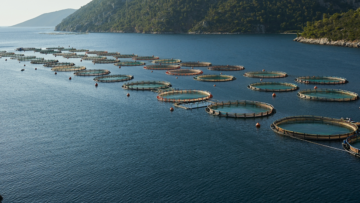Lights. Camera. Pigs? Dr. Dorman Hits Hollywood
When you think Hollywood, you typically think glamour, movie stars and that iconic hillside Hollywood sign. But what about … pigs?
Pigs played the starring role recently when I had the opportunity to speak to the Hollywood Rotary Club.
My virtual presentation was part of a long-time program called Operation Mainstreet (OMS). Launched in 2004 by the National Pork Board, OMS includes more than 1,300 enthusiastic farmers, veterinarians and other volunteers dedicated to telling the pork industry’s story of innovation, sustainability and animal stewardship.
From culinary students and civic groups to grocers and health professionals, the groups OMS volunteers engage are as diverse as the questions asked.
I experience this curiosity each time I’m in front of a group on behalf of OMS and Hollywood was certainly no different.
Consumers today have lots of questions about where their food comes from, and rightly so, as most are generations removed from the farm. So when a veterinarian and farmer from rural Ohio entered the (virtual) room, there was plenty of discussion.
One of the first questions asked was how long it takes for a pig to get from birth to market. The group was astounded that it’s just six months and joked that they’d like to be on that feeding plan – gaining around 265 pounds in a short timeframe.
There’s a great deal of care that goes into raising pigs. From birth, piglets are housed in clean, climate-controlled conditions that protect them from the elements, diseases and predators (such as the big, bad wolf ?). For additional help fighting diseases, young pigs receive vaccinations to give them a healthy start. They have access to fresh water and special diets based on their life stage, and veterinary care. This not only ensures the animals are healthy but results in safe, nutritious pork that feeds families in the U.S. and around the world.
The Hollywood Rotary Club also asked questions about sustainability, particularly when it comes to conserving water. That makes perfect sense given the extremely dry conditions and water shortages California has been experiencing for quite some time.
Sustainable farming has been at the heart of pig farming for generations. Through a commitment to raising healthy, affordable food, pig farmers have focused on science-backed ways to continuously improve how they raise pigs. That includes a focus on water use.
The group was pleased to learn that per pound of pork from 1965 to 2015, water use has decreased 25.1 percent. U.S. citizens would each have to shower 90 fewer times per year to save that much water.
In addition, energy use has been reduced by 7 percent, greenhouse gas emissions by 7.7 percent and land use by a whopping 75.9 percent. That’s a testament to farmers’ dedication to protecting the earth. In fact, when considering all U.S. greenhouse gas emission sources, the carbon footprint of pig farms is only 0.35 percent.
Other questions I’m often asked:
- Is pork healthy?
Pork is a great source of lean, nutritious protein. In fact, pork tenderloin is as lean as skinless chicken breast. Eight of the most common cuts of pork are 16 percent leaner. There are 22 grams of protein in a 3 ounce serving of pork tenderloin and 24 grams in the same serving of pork loin or sirloin. And thanks to research-based breeding practices and improved nutrition over the years, saturated fat in pork is down 27 percent.
- How are antibiotics used on pig farms?
Like us, sometimes pigs get sick. We use antibiotics to return pigs to health, but only with veterinary oversight and in strict compliance with FDA rules. We use only what’s needed for pig health and there is a withdrawal time to ensure antibiotics are out of their system before they ever enter our food supply.
It’s always an honor to speak to groups across the country and answer their important questions as part of Operation Main Street. With so much misinformation circulating about food production today and a growing curiosity, OMS volunteers are more than happy to share the great story of what’s happening on pig farms across America.
It may not be the kind of story that Hollywood movies are made of, but it is one that demonstrates the commitment of farmers across the country to provide safe, nutritious food, and the best care for their animals and our planet.

